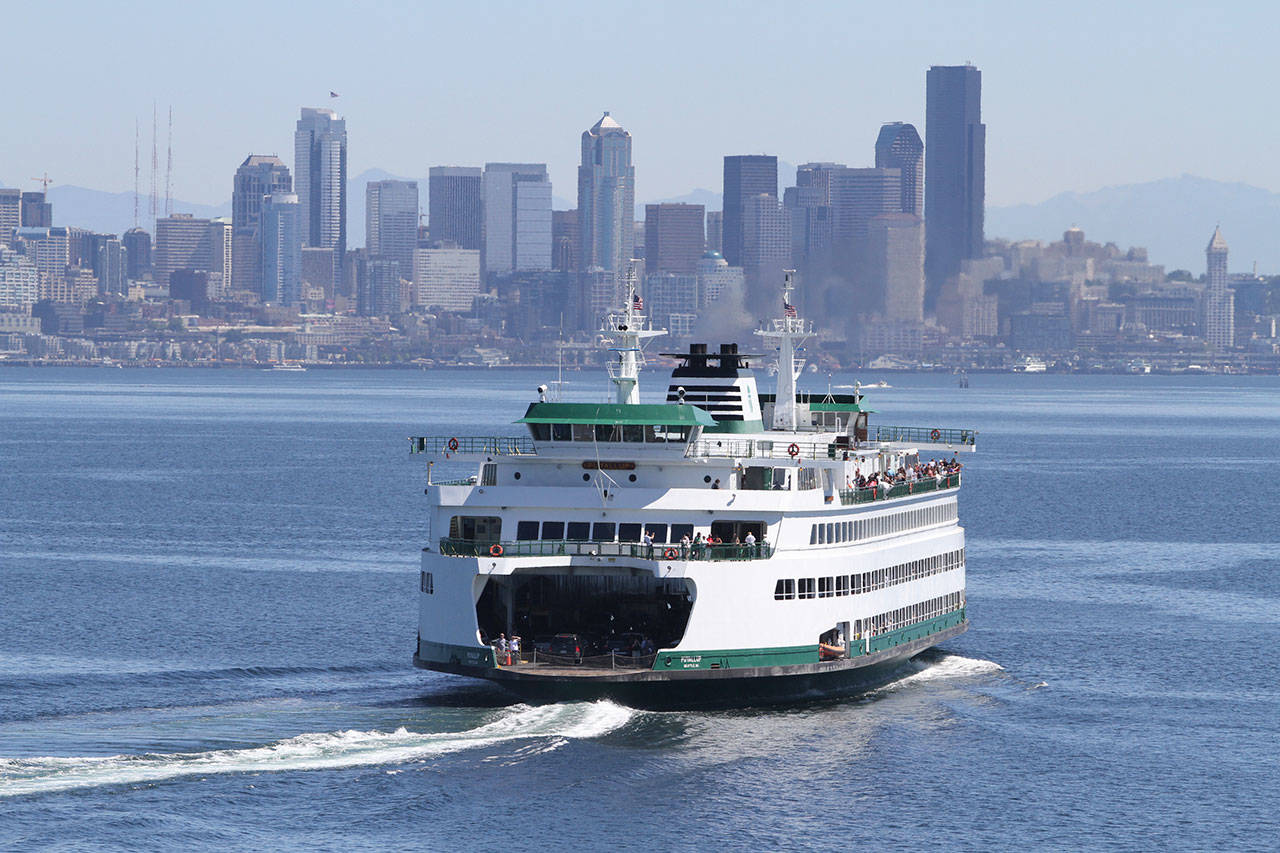The Washington ferry system is one of our state’s most valuable resources. Ferry communities rely on Washington State Ferries as our marine highway, to transport goods and services for our daily lives and to get to and from our jobs. Kitsap County has four marine routes: Bainbridge, Bremerton, Kingston and Southworth.
The demand for ferries is expected to increase by more than 30 percent by 2040 — from 24.5 million riders in 2017 to 32 million in 2040. This growth in ridership means that the ferry system must also expand its capacity by building and adding new vessels to the fleet.
Governor Jay Inslee understands this need. The governor proposed building two new electric ferries and converting two current ferries to hybrid electric-diesel propulsion in his 2019-21 budget.
Washington State Ferries’ new Long Range Plan, released in January, says the state’s current ferry-build contract should be extended to build five new Olympic Class 144-car ferries as soon as possible to meet the immediate needs of an aging ferry system.
Gov. Inslee and Washington State Ferries are right. The state should provide funding for new ferries, to meet increased demand and stabilize a ferry system that already has a shortage of vessels.
Thirteen of WSF’s 23 current vessels are due to retire by 2040. The ferry system’s reliability is likely to diminish every year without new vessels. The current fleet supports only about two thirds of the planned maintenance time needed for each vessel, increasing the risk of unexpected service outages.
Our ferry-served communities need a modern, reliable ferry system. Outdated vessels are more expensive for Washington State to operate per-passenger-mile, and require more maintenance. Ferry breakdowns impact the entire system.
As WSF’s Long Range Plan recommends, Olympic Class 144-car ferries are the right type of vessel to meet the urgent, immediate ferry system needs. Olympic Class ferries are large enough to serve nearly every route in the system. And using this model means WSF can standardize its fleet with a common hull design, leading to cost efficiencies for training and spare parts, and labor interchangeability of labor.
The Olympic Class design can also be reworked for the hybrid electric-diesel propulsion ferries that Governor Inslee recommends, and which will allow WSF to meet or exceed its emission reduction targets.
Washington State Ferries is the largest ferry system in the U.S. and one of the largest in the world. At any moment, more than half of the fleet is loading, unloading or sailing — moving between 20 terminals in eight counties and along 200 miles of marine highway.
But WSF viability is threatened by aging boats and an overworked fleet. The Legislature needs to fund new vessels now to ensure the ferry system can meet growing demand and address a critical part of Washington’s transportation network for decades to come.
Commissioner Robert Gelder, Commissioner Charlotte Garrido and Commissioner Edward E. Wolfe comprise the Kitsap County Board of Commissioners.



